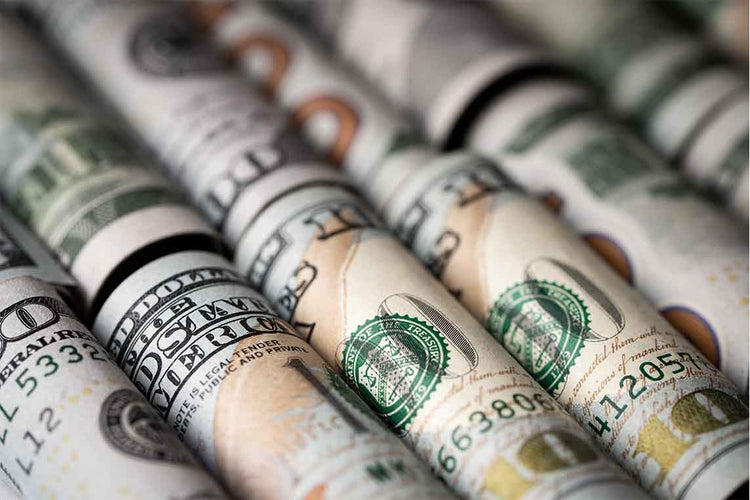In the world of global finance, the U.S. Dollar holds a position of unrivaled importance. It's not just a currency; it's a symbol of economic stability and trust. This article delves into an often overlooked aspect of this powerful currency: the lifespan of U.S. Dollar bills. We're taking a closer look at how long these bills last, why it matters, and the broader implications on both the economy and the environment. By understanding the life cycle of our currency, we can gain valuable insights into sustainability practices, economic policies, and the evolving nature of money in our increasingly digital world.
Why Conduct a Life-Cycle Assessment?
Understanding the life cycle of a U.S. Dollar bill is crucial, not just from an economic standpoint, but also for environmental and policy considerations. A life-cycle assessment (LCA) offers a comprehensive look at the environmental impacts associated with all the stages of a product's life—from production to disposal. For U.S. currency, this means examining everything from the energy used in manufacturing bills to the process of taking worn-out bills out of circulation. This assessment helps us understand the real cost of our currency, beyond its face value. It informs policymakers and the public about the sustainability of our current practices and can drive innovations in currency production and recycling, ultimately leading to a more environmentally friendly and cost-effective future for our cash.
Manufacturing of U.S. Dollar Bills
The production of U.S. Dollar bills is a process that combines high-tech printing techniques with precise material selection to ensure durability and security. The Bureau of Engraving and Printing is responsible for this intricate task. Unlike common paper, U.S. currency is made from a blend of cotton and linen, which contributes to its distinct feel and longevity. Over the years, there have been significant strides in enhancing the durability of these bills. Innovations like advanced inks and security features not only help in deterring counterfeiting but also extend the lifespan of the currency. As we move forward, continuous improvements in these areas promise to make our bills last longer while maintaining their iconic status.
The Average Lifespan of U.S. Currency: A Detailed Look
The lifespan of U.S. Dollar bills is closely tied to their denomination and how frequently they are used in transactions. For instance, $100 bills, known for their higher value, are not exchanged as often as $5 bills. They are typically held onto rather than passed across counters regularly. This variance in circulation patterns significantly influences the longevity of each denomination. The average lifespan of a $1 bill is about 6.6 years, which is less than that of a $20 bill, lasting approximately 7.8 years. Smaller denominations like the $5 bill have an even shorter lifespan of about 4.7 years due to their high circulation in daily transactions. On the other hand, higher denominations like the $50 and $100 bills enjoy longer lifespans, 12.2 years and 22.9 years respectively, as they are used less frequently and handled more cautiously. These figures underscore the impact of usage patterns on the wear and tear of currency, guiding the Federal Reserve in its currency production and circulation strategies.
How Banknotes are Recycled
When U.S. Dollar bills reach the end of their lifespan, they don't just disappear; they are systematically taken out of circulation and recycled. This process is crucial for maintaining the integrity and trust in the nation's currency. Old, worn-out bills are shredded and then repurposed, often finding new life in surprising ways. The shredded currency can be transformed into products like compost, insulation, and novelty items. This recycling process is not only an effective way to handle unusable currency, but it also represents a commitment to sustainability and environmental responsibility. The Federal Reserve, in coordination with various recycling agencies, ensures that the end-of-life handling of banknotes is as environmentally friendly as possible, turning what was once valuable currency into valuable resources.
Environmental Impact of Banknote Production and Disposal
The production and disposal of U.S. Dollar bills carry an environmental footprint that cannot be overlooked. From the energy consumption in printing facilities to the implications of ink use and paper sourcing, every aspect of banknote creation has ecological consequences. Moreover, the process of destroying old bills, though necessary for maintaining currency integrity, also presents environmental challenges. Recognizing these impacts, steps are being taken to make currency production more sustainable. These include using eco-friendlier inks, optimizing energy use in production facilities, and exploring more sustainable methods for paper sourcing. Equally, advancements in the recycling of old banknotes are helping to reduce waste and promote a circular economy. By addressing these environmental concerns, the U.S. Treasury and the Federal Reserve are not only ensuring the durability and security of the currency but also its sustainability for future generations.
Digital Currency and the Future of Cash
The advent of digital currency and contactless payments is reshaping the landscape of monetary transactions, potentially impacting the future demand for physical cash, including U.S. Dollar bills. As more people embrace digital wallets and online transactions, the frequency of cash usage is gradually declining, especially among younger demographics. This shift poses significant questions about the future role of physical currency. While it's unlikely that cash will be completely phased out in the near future, its form and prevalence may change. The Federal Reserve and other financial institutions are closely monitoring these trends, preparing for a future where digital transactions may become the norm. This evolution calls for a balanced approach, one that accommodates the benefits of digital currency while recognizing the continued importance and convenience of cash in many aspects of daily life.
Conclusion
In exploring the lifespan of U.S. Dollar bills, we uncover a complex interplay between economics, technology, and environmental stewardship. The variances in the lifespans of different denominations reflect not just their physical attributes, but also their roles in our daily lives. The process of recycling banknotes illustrates a commitment to sustainability, turning what was once a symbol of economic value into a resource for environmental value. As we edge towards a future where digital currency might take a more prominent role, understanding the life cycle of our physical currency becomes even more crucial. This knowledge not only informs monetary policy and production strategies but also highlights the need for continued innovation in ensuring the sustainability and efficiency of our currency. The U.S. Dollar, as a cornerstone of the global economy, thus continues to evolve, adapting to the changing needs of society and the environment.
Further Reading
For readers interested in delving deeper into the topic of U.S. currency lifespan and sustainability, I recommend exploring the article Hidden Secrets of the One Dollar Bill at Ribaostore. This piece offers fascinating insights and lesser-known facts about the U.S. Dollar, enhancing your understanding of this critical aspect of American and global finance.







